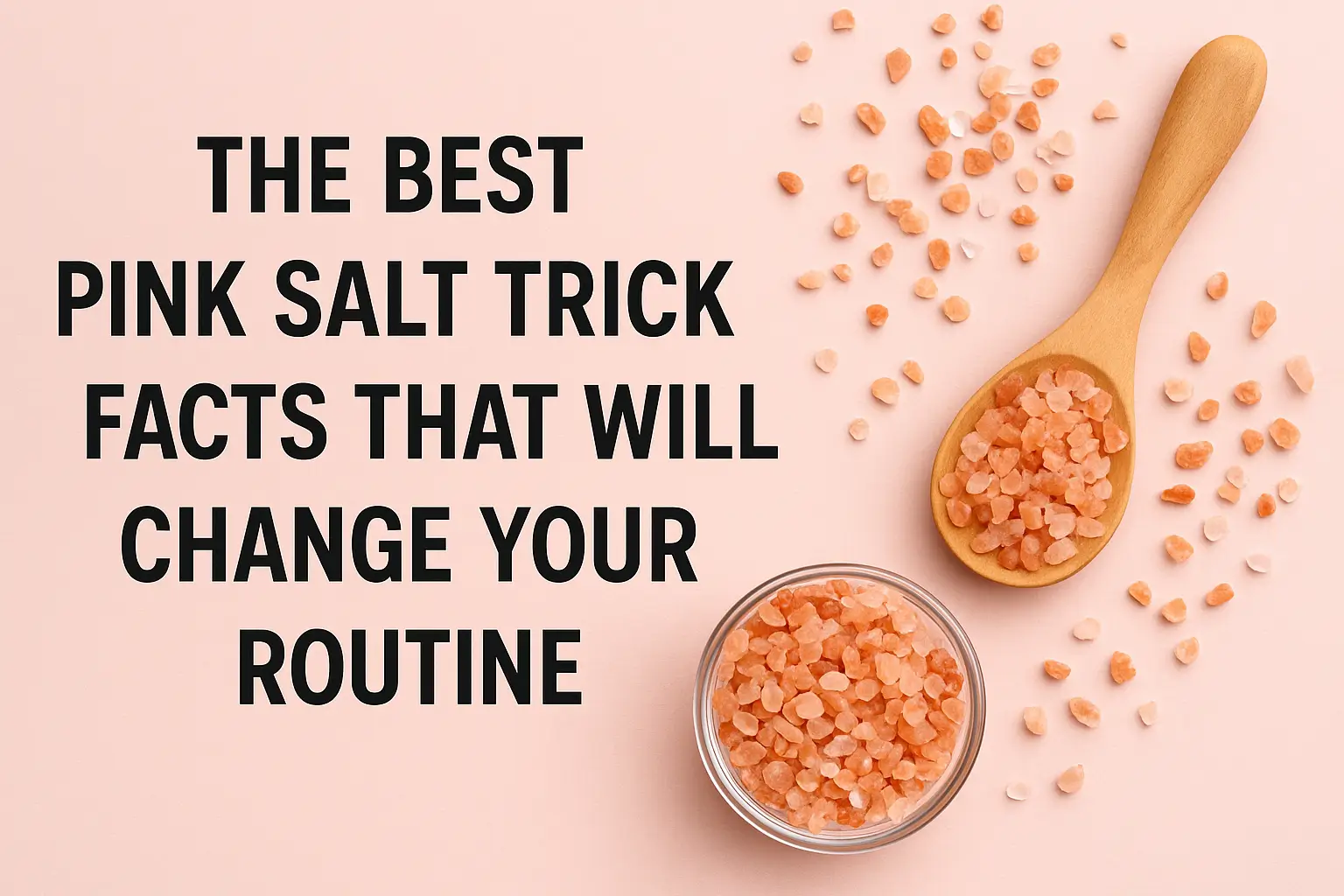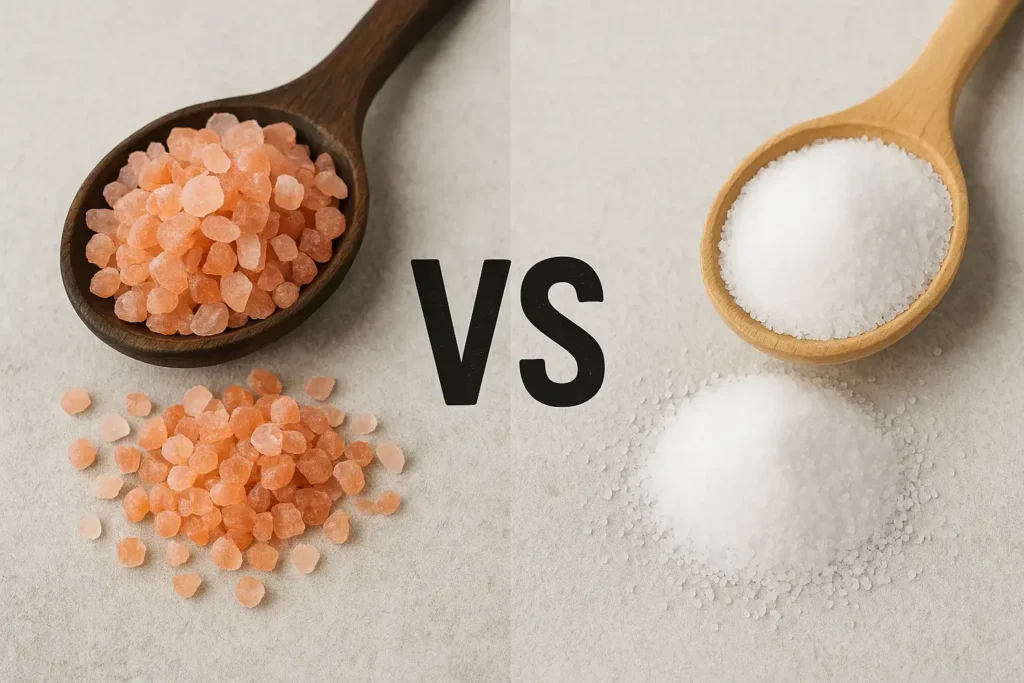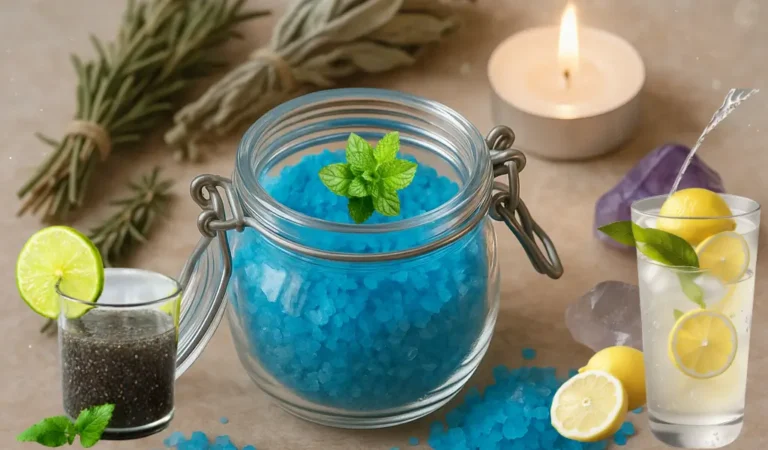The Best Pink Salt Trick Facts That Will Change Your Routine

Pink salt has gained significant attention in recent years, becoming a favorite among health-conscious individuals and culinary enthusiasts alike. Known for its vibrant hue and distinct flavor, this salt is not only prized for its aesthetic appeal but also for its purported health benefits.
From cooking to wellness practices, pink salt has found its way into numerous aspects of daily life. In this article, we will dive into the facts you need to know about the pink salt trick, its benefits, and how to use it effectively.
What Is Pink Salt?
Pink salt is a type of salt that is mined from ancient salt deposits, with the most well-known variety being Himalayan pink salt. It is harvested from the foothills of the Himalayan mountains, specifically from salt mines in Pakistan, where it is hand-mined and then processed without chemicals or additives.
There are different types of pink salt, including Himalayan pink salt and sea salt. Himalayan pink salt is known for its larger crystals, which are often used in salt lamps or ground into a finer consistency for cooking. Sea salt, on the other hand, is typically harvested through the evaporation of seawater and comes in varying shades of pink, depending on the minerals present.
When compared to regular table salt, pink salt stands out due to its higher mineral content. Table salt is heavily processed and stripped of its natural minerals, leaving behind mostly sodium chloride, while pink salt retains a variety of trace minerals, including magnesium, potassium, and calcium.
Also Check this Recipe:
Important Truths About the Pink Salt Trick Recipe.
- Pink Salt Is Rich in Trace Minerals
Pink salt contains more than 80 trace minerals, including calcium, magnesium, potassium, and iron, which contribute to its distinctive color and potential health benefits. - Not All Pink Salt Is Himalayan
While Himalayan pink salt is the most famous, pink salt can also be harvested from other regions, including the Andes mountains and certain sea beds. The mineral composition can vary depending on the origin. - Pink Salt May Help Balance pH Levels
Pink salt is believed to help balance the body’s pH levels, making it less acidic. This can contribute to better overall health and support the immune system. - Himalayan Pink Salt Has Been Used for Centuries
Himalayan pink salt has been used for thousands of years in traditional medicine and cooking. It was once traded along ancient trade routes, which is why it’s known for being one of the purest forms of salt. - Pink Salt Can Be Beneficial for Skin
The minerals in pink salt, like magnesium, can help improve skin hydration and promote a healthy glow when used in bath salts or as part of a body scrub. - It Has Lower Sodium Content Than Table Salt
While still a sodium chloride, pink salt tends to have lower sodium content by volume compared to regular table salt, making it a slightly healthier option when used in moderation. - Pink Salt is Naturally Non-GMO and Free from Additives
Himalayan pink salt is typically not processed with additives or chemicals, unlike regular table salt, which often contains anti-caking agents or iodine. - Pink Salt Can Be Used for Cooking and Decorative Purposes
Aside from culinary uses, pink salt can also be used for decorative purposes. Large blocks of pink salt are sometimes used as cutting boards or serving platters, adding a unique aesthetic to your kitchen. - Pink Salt is Known for its Hydrating Properties
The trace minerals in pink salt may help improve hydration levels in the body when consumed in moderation. This is especially important for maintaining electrolyte balance during physical activity. - Some Believe It Enhances the Flavor of Food
The complex mineral composition of pink salt is said to give it a more refined and nuanced taste compared to regular salt, which is why many chefs prefer it in high-end cooking.
Health Benefits of Pink Salt
One of the reasons pink salt has become so popular is its potential health benefits. Unlike regular salt, pink salt is rich in over 80 essential minerals and trace elements. These minerals are believed to support various bodily functions and contribute to overall health.
Hydration and Electrolyte Balance: Pink salt can help improve hydration by supporting a healthy balance of electrolytes in the body. The minerals found in pink salt can aid in maintaining proper fluid balance, which is essential for optimal bodily function.
Supporting Digestion: Some proponents of pink salt believe it can help improve digestion. The minerals in pink salt are thought to stimulate the production of digestive fluids and promote a healthier gut.
Detoxification and Sleep: Pink salt is also believed to have detoxifying properties, helping the body eliminate toxins. Additionally, using pink salt in baths or as a night-time ritual is said to promote better sleep by calming the nervous system.
The Pink Salt Trick Explained
The “pink salt trick” refers to various wellness practices and culinary uses that leverage the unique properties of pink salt. From salt lamps to salt scrubs, this versatile ingredient is employed in numerous ways to promote relaxation, detoxification, and overall well-being.
Salt Lamps: Himalayan salt lamps are one of the most popular ways to use pink salt in wellness routines. These lamps are said to purify the air by emitting negative ions, which can help reduce allergens and improve mood and sleep quality. While more research is needed to confirm these benefits, many people find salt lamps to be calming and soothing additions to their homes.

Salt Scrubs: Another common use of pink salt is in salt scrubs, which are used to exfoliate the skin and promote circulation. Pink salt scrubs are often combined with essential oils or moisturizing agents to provide a relaxing and revitalizing experience.
In Cooking: Pink salt can also be used in cooking, where it imparts a unique flavor and is often preferred for its mineral content. It can be used as a finishing salt on dishes or incorporated into recipes to enhance taste and provide a touch of natural color.
Pink Salt vs. Regular Salt:
When it comes to the comparison between pink salt and regular salt, there are several key differences worth noting.
| Feature | Pink Salt | Regular Salt |
|---|
| Source | Mined from ancient sea salt deposits, primarily from the Himalayan region | Mined from underground salt deposits or evaporated from seawater |
| Mineral Content | Contains over 80 trace minerals, including magnesium, calcium, and potassium | Contains mostly sodium chloride, with small amounts of iodine and anti-caking agents |
| Processing | Minimal processing, usually left in its natural form | Heavily processed, often bleached and refined |
| Color | Varies from light pink to deep red | Usually white, but can be iodized (slightly off-white) |
| Flavor | Slightly milder and more complex flavor due to minerals | Sharp, straightforward salty taste |

| Health Benefits | Promoted for better hydration, digestive health, skin care, and electrolyte balance | Generally considered basic for seasoning, but excess use can lead to health issues like high blood pressure |
| Uses | Used in cooking, beauty treatments, bath soaks, and salt lamps | Commonly used in cooking, preserving food, and as table salt |
| Additives | No additives, can be completely natural | Often contains anti-caking agents, and may include iodine |
| Price | Typically more expensive due to its sourcing and minimal processing | Generally cheaper and widely available |
| Environmental Impact | More eco-friendly, as it’s often sourced using traditional methods | Can have a larger environmental footprint depending on the extraction process |
| Availability | Available at specialty stores, health shops, and online | Widely available in supermarkets and grocery stores |
How to Incorporate Pink Salt into Your Diet
Incorporating pink salt into your diet is easy, and it can be used in various ways to enhance both flavor and nutrition.
Simple Ways to Use Pink Salt: You can use pink salt in place of regular salt in most recipes. Whether you’re cooking soups, salads, or grilled meats, the mild and nuanced flavor of pink salt can elevate your dishes. It can also be sprinkled on roasted vegetables, eggs, or even popcorn for an added burst of flavor.
Alternatives to Regular Salt: For those looking to reduce their sodium intake, pink salt can serve as a healthier alternative to traditional table salt. It provides the necessary salty taste while delivering additional minerals to the body.
Balancing Salt Intake: While pink salt offers health benefits, it is important to use it in moderation. Excessive salt consumption, regardless of the type, can still have negative effects on your health. Balance is key when incorporating any type of salt into your diet.
Myths and Misconceptions About Pink Salt
There are several myths surrounding pink salt that need clarification. While pink salt contains beneficial minerals, its health benefits are often overstated. It’s important to remember that pink salt is not a miracle cure and should not be relied upon solely for health improvement.
Pink salt does contain trace minerals, the quantity of these minerals is relatively small. It is unlikely that using pink salt will significantly impact your mineral intake, especially if you’re already consuming a balanced diet.
According to research, the purported benefits of pink salt, such as improved sleep and detoxification, are mostly anecdotal. More studies are needed to scientifically validate these claims.
Conclusion
The pink salt trick isn’t just a culinary trend—it’s a wellness practice that has stood the test of time. Whether used in cooking, as a bath salt, or through the calming effect of salt lamps, pink salt offers a variety of benefits.
From its rich mineral content to its potential impact on health, this vibrant ingredient is a great addition to your diet and wellness routine. Experiment with incorporating pink salt into your life and discover how this natural salt can enhance both your meals and your well-being.


